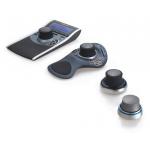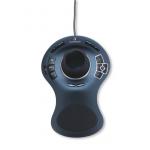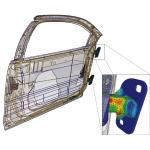Latest News
January 1, 2007
By DE Editors
SimOffice is compatible with Microsoft’s Vista operating system, but it does not require users to adopt Vista. Built on the .NET framework, SimOffice is a multi-CAD-ready program that lets you read in and use the native geometry of major CAD systems.
“We’re not forgetting about anyone using ]existing] MSC products,” Pawela said in a recent phone conference, explaining SimOffice was upward compatible to enterprise tools such as MD Nastran and MD Patran. Thus, anyone with Patran scripts can use them in SimOffice. And, in the other direction, Pawela pointed out, a spreadsheet could be used to run a simulation.
Designed with the needs of a wide range of manufacturers — from small and midsized organizations to large enterprises — in mind, SimOffice enables manufacturers to benefit from existing IT investments and simulation environments through the entire suite of Microsoft solutions.
By enabling engineers to create and test models on their Windows-based platform, MSC says manufacturers can get better, more accurate design data earlier in the product development process. SimOffice includes an easy-to-use Microsoft Windows-based finite element modeler package with MD Nastran for linear static, linear buckling, normal modes, steady-state heat transfer, and dynamic-frequency response analyses. It is also collaboration-ready for out-of-the-box integration with 2007 Microsoft Office Groove and Microsoft Office SharePoint Server 2007.
SimOffice will be available through resellers that are a part of MSC Impact. For more, visit MSC.Software Corp.
HP Unveils Intel Quad-Core workstations.
 |
| HP xw8400 workstation |
Multi-core workstations offer the performance capacity required for multi-tasking and multi-threaded, compute-intensive applications such as visualization and analysis common in CAE, oil and gas, and DCC environments. DE is awaiting arrival of a Quad-Core Intel Xeon 5300 processor-based HP xw8400 workstation for evaluation and will report our findings on the Engineering IT & Computing page at deskeng.com as soon as is practicable.
HP workstations featuring the new Quad-Core Intel Xeon 5300 processor series will have an estimated starting price of $2,349, although fully configured units are expected to cost substantially more. For further details, go to Hewlett Packard.
New materials complement announcement of new plastic laser-sintering system and two improved models.
EOS of North America (Nov, MI) has introduced one new plastic laser-sintering machine and two improved models. Additionally, the company rolled out new materials.
The new FORMIGA P 100’s compact footprint and height — 195 cm (76.77 inches) — mean that it can fit in most any production environment. Additionally, its preparation and building process control can be carried out at the user’s desktop. The unit’s build envelope is 7.87 x 9.84 x 12.99 inches. The FORMIGA P 100 is said to be able to build vertical walls with high-surface quality and wall thicknesses as thin as 0.4 mm (0.02 inches.), which enables it to produce small components such as connectors. The new FORMIGA P 100 is said to be able to create plastic products directly from CAD data in less than 24 hours.
The new EOSINT P 730 is an advanced version of the earlier P 700 system. Said to be the only double-laser system for plastic laser-sintering, the P 730 is up to 40 percent more productive than the P 700. (For a review of the P 700, click here.) The EOSINT P 390 also offers increased productivity combined with better surface quality.
EOS Systems also presented a new version of its PSW process software and several new titanium alloy powders at EuroMold. The new titanium alloys open up applications in the aerospace and medical industries. EOS Systems says that its new MaragingSteel MS1, a martensite-hardening, high strength, 18 maraging 300 steel (type 1.2709), offers a significant increase in quality, particularly for tooling manufacture.
For complete details on the new EOS plastic laser-sintering machines and new materials, go to the EOS of North America.
High-school students competing to design products that will help people with disabilities enter or advance in the workplace are using free licenses of SolidWorks 3D CAD software. SolidWorks’ sponsorship has enabled contestants in the National Engineering Design Challenge (NEDC) to design everything from mechanical filing systems to lifts that load employees from wheelchairs onto lawn mowers.
Coordinated by the Junior Engineering Technical Society (JETS) and the Javits-Wagner-O’Day (JWOD) program, NEDC fuels student enthusiasm in engineering by immersing them in real-world challenges that people with disabilities face daily. Students form teams and either choose the problem they want to address or tackle one suggested by competition staff. Students then interview people with disabilities to learn exactly what their challenges are, and what suggestions for solutions they might have. Students then design and build a working prototype, which was reviewed by panel of judges for possible invitation to a final round during National Engineering Week in Washington, DC.
More than 1,000 students in nearly 50 schools competed last year. Last year’s first-place entry was an ergonomic, electronic box opener that reduced pressure and increased safety for users. Other projects included an all-purpose photoelectric counter used in manufacturing facilities and a gripping device that lets users pick up items from the floor, ground or shelves without incurring repetitive stress injuries.
“Real-world experience is a powerful means of attracting students to productive engineering careers,” said Marie Planchard, SolidWorks’ Director of Education. “The JWOD/JETS NEDC competition is a terrific opportunity for students to design products that could really make a difference.”
For more on SolidWorks’ support of tomorrow’s engineers, read Marie Planchard’s commentary in the January 2007 issue of DE.
3Dconnexion (San Jose, CA) has updated its product line with two new 3D navigation devices, new software, and new pricing. Respectively representing entry-level and mid-range offerings, the new devices, SpaceNavigator and SpaceExplorer, replace the SpaceBall and SpaceMouse in the product line-up, the latter were discontinued at the end of 2006. Concurrently, 3Dconnexion lowered the price of its high-end 3D SpacePilot to $399, while the portable SpaceTraveler remains $199.
 |
| 3Dconnexion’s new product family. |
All the devices are used with your alternate hand as a mouse complement. Each has a controller cap that enables you to interact and control—simultaneous pan, zoom, and rotate, for example—3D content by flying through that content without stopping to use the keyboard or mouse to change directions. The controller cap provides six-degrees of freedom, and the devices’ six optical sensors communicate multiple threads of navigation data to 3D applications continuously.
The SpaceNavigator is an entry-level, puck-sized 3D navigation device. Available in personal (PE) and standard (SE) editions, SpaceNavigator PE has a $59 suggested retail price, while the SE goes for $99.The primary difference is that the SE comes with a commercial-use license. The SpaceNavigator’s small, heavy steel base holds it to the desktop, and its pair of programmable buttons let you customize your workflow.
 |
| SpaceNavigator |
The new SpaceExplorer is a full-featured midrange device. Its ergonomic design includes a handrest and 15 pre-configurable function keys. SpaceExplorer’s suggested retail price is $299.
 |
| SpaceExplorer |
3DxSoftware 3.0 features a new Configuration Wizard that helps you better use the navigation device as well as configure it. Also, support has been added for Autodesk Design Reviewer, Google Earth, and Google SketchUp.
Go to the 3DConnexion website to learn more.
ABAQUS 2.4 for CATIA V5 Released
New features expand simulation capabilities for CATIA users.
Dassault Systèmes (DS; Paris, France) has announced the availability of Version 2.4 of ABAQUS for CATIA V5, a key component of DS’s SIMULIA strategy. The SIMULIA strategy strives to provide scalable simulation solutions and an open framework for performing multidisciplinary analysis within the PLM (product lifecycle management) process. ABAQUS for CATIA builds on the SIMULIA strategy by integrating a range of linear and nonlinear FEA capabilities within the CATIA V5 environment. Version 2.4 of ABAQUS for CATIA, says DS, introduces several advanced analysis capabilities, such as dynamic analysis, self-contact, submodeling, and cyclic symmetry.
 |
| ABAQUS for CATIA Version 2.4 |
Dynamic simulation capabilities based on ABAQUS/Explicit are among the enhancements in ABAQUS for CATIA Version 2.4. Here, a new capability enables the definition of very general contact conditions, including contact between many or all regions of the model with a single interaction definition. Such dynamic analyses, says DS, are well suited for large models with relatively short response times and for modeling extremely discontinuous events, such as impacts.
ABAQUS for CATIA provides self-contact modeling to simulate surface folding, such as when a complex rubber seal folds over on itself. Since self-contact is typically the result of large deformation in a model, it is often difficult to predict which regions will be involved or how they will move relative to each other. A new capability in Version 2.4 enables you to self-contact selected surfaces.
Version 2.4’s new submodeling capability lets you target regions of interest for detailed stress analysis, letting you obtain accurate, detailed solutions in a local region. You can target a region with a refined mesh and apply submodel boundary conditions in both mechanical and thermal steps.
ABAQUS for CATIA 2.4’s cyclic symmetry modeling capability is said to improve analysis efficiency and reduce model size. Cyclic symmetry modeling is useful for automotive brake disc analysis or turbomachinery simulation. With it, you no longer need to model the entire body when analyzing a body whose geometry, loads, prescribed conditions, and response are symmetric about an axis of revolution. In version 2.4, you can simply model a repeating sector of the body and set fastened pairs to define the sector boundaries. The software then simulates the rest of the unmodeled body.
For complete details on ABAQUS for CATIA V5 version 2.4, including a downloadable PDF datasheet, go to the SIMULIA website. Hexagon Opens Precision Center in NC
Hexagon Metrology (North Kingston, RI) has moved one of its Precision Centers to a expanded facility in Huntersville, NC. The 10,000-sq. ft. Precision Center features a training facility, a demonstration center, and a new precision measurement laboratory. The training center doubles Hexagon’s capacity to hold all levels of user training courses and workshops. The measurement laboratory enables Hexagon to offer contract inspection services to manufacturers in the region. Hexagon’s name-brand portfolio of includes Brown & Sharpe, Leica Geosystems, ROMER, Sheffield, PC-DMIS, DEA, Leitz, and TESA.
CHAM Ltd. (London, UK) has expanded its interactive online CFD service. PHOENICS On-Line provides unrestricted and immediate access to CFD modeling software.
PHOENICS On-Line has been introduced as an alternative or supplement to standard licensing arrangements. Customers purchase an account to access PHOENICS for unlimited use during any given calendar month using a single credit card payment. This caters to designers and engineers wishing to make short-term or project-based use of the code.
PHOENICS is used for modeling processes involving fluid flow, heat or mass transfer, chemical reaction, and combustion occurring within engineering equipment or the environment. Industrial applications for PHOENICS range from simulating complex multi-phase reacting flows needed within the chemical, process, and power-generation industriesto fire and smoke hazards within and around buildings.
A “Look Learn Try” button offers users free connection to investigate tutorial and application examples using the PHOENICS Commander before any commitment to use the service for a period of time is required.
Further, CHAM can create individual examples and undertake online interactive demonstrations of cases specified by prospective clients, functioning as a virtual sales office. These examples are then left online for the customer to evaluate, modify, and extend at his or her leisure. When authorized, CHAM’s Support Team can gain access to client cases to provide “live” and interactive advice and support when requested.
For more information, go to CHAM, Ltd.
Sopheon (Bloomington, MN) announced the introduction of a set of add-on applications for its Accolade product lifecycle management (PLM) solution aimed at helping companies improve collaboration and get to market faster with new products. With more advanced charts, planning tools, and better views of short- and long-term product development schedules, Accolade Accelerators 2.0 should drive more cost-effective product and service innovation.
The Accelerators are designed to help manufacturers generate more value from their products and provide them with an effective blueprint for improving innovation.
According to Sopheon, the product innovation process changes as a business evolves and its capabilities grow. As it moves through stages of maturity, usually marked by increasing sophistication and broader use by end users, there is a corresponding increase in the revenue and profit generated from new products. Because companies vary dramatically in maturity and competency, the Accelerators attempt to align their technology with the company’s needs.
Each Accolade Accelerator consists of a prepackaged software configuration built around best practices for governing the innovation process.
There are three applications in the version 2.0 set:
• Stage-Gate Accelerator cuts the time it takes for an organization to put a fully functional innovation process in place by providing highly configurable process models. These include introductory, traditional, fast-track, and post-launch versions, as well as out-of-the-box templates for deliverables. Implementation can be completed in as few as 60 days and can be used to manage a product from the time it is conceived until it is retired from the market.
• Portfolio Management Accelerator provides a process model for keeping track of products. It uses advanced charts and reports rooted in key metrics and best-practice algorithms so users can see visual representations of the impact of adding or removing particular projects from the developmental pipeline.
• Product Planning and Roadmapping Accelerator makes it easier to develop credible and reliable product plans, and to ensure successful plan execution. This Accelerator provides clear short- and long-term views of product development schedules, charts interdependencies among projects, and allows the user to see potential bottlenecks far in advance and eliminate them before they derail launch plans.
For more information, visit Sopheon.
Beta version of support for Windows XP Professional x64 version for SolidWorks x64 released.
3D QuickTools Ltd. (Hong Kong) recently announced the Beta release of Windows XP Professional x64 version of 3DQuickPress, a 3D die design software and strategic SolidWorks Gold Product that gives additional capacity and speed to advanced die design users.
In the metal stamping industries, die assemblies contain thousands of components. With the RAM memory limitations of 32-bit Windows, users need to partition a very large die set assembly into pieces to get the job done at an acceptable computer speed. With the new 64-bit environment, users can complete their more complex jobs without partitioning.
Click here for more information about the Beta release of Windows XP Professional x64 version of 3DquickPress.
Subscribe to our FREE magazine, FREE email newsletters or both!
Latest News
About the Author
DE’s editors contribute news and new product announcements to Digital Engineering.
Press releases may be sent to them via [email protected].






